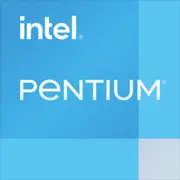Intel Pentium 2127U

Intel Pentium 2127U: A Budget Processor for Basic Tasks in 2025
April 2025
Despite the rapid development of technology, the market continues to offer entry-level laptops for those who do not require high performance. The Intel Pentium 2127U is an example of such a processor that remains relevant in the budget segment even years later. Let’s explore who this solution will suit in 2025 and what compromises will need to be made.
Architecture and Manufacturing Process: Modest Capabilities
Cores, Threads, and Frequencies
The Pentium 2127U belongs to the Ivy Bridge architecture (3rd generation Intel Core), released in 2012-2013. The manufacturing process is 22 nm, which is considered outdated by 2025 standards (modern chips use 5-7 nm).
- 2 cores, 2 threads — the lack of Hyper-Threading limits multitasking.
- Base frequency: 1.9 GHz, turbo mode is not supported.
- Cache: 2 MB L3.
Integrated Graphics
The built-in GPU is Intel HD Graphics (Ivy Bridge), clocked at 350–1100 MHz. The graphics are designed for basic tasks:
- Full HD video playback.
- Less demanding games like Minecraft or Terraria at low settings (up to 30 FPS).
- Support for DirectX 11, but lacks hardware acceleration for modern AV1 codecs.
Power Consumption and TDP: A Balance Between Efficiency and Power
The processor's TDP is 17 W. This allows it to be used in thin laptops without active cooling or with compact coolers.
Features:
- Low heat dissipation: laptops do not overheat even under prolonged loads.
- Support for power-saving technologies: Intel SpeedStep (dynamic frequency scaling), C-states (turning off unused blocks).
However, the absence of modern standards, such as Intel Thread Director (available in 12th generation and newer), reduces load management flexibility.
Performance: Realistic Expectations
Office Work and Multimedia
- Office applications (Microsoft 365, Google Workspace): Working with documents, spreadsheets, presentations — without delays.
- Web surfing: Comfortable operation with 5–10 tabs in the browser (Chrome, Edge), though speed drops when heavy websites (e.g., Figma or Canva) are opened.
- Video: Watching 1080p videos on YouTube, streaming services (Netflix, Twitch). 4K is not supported.
Gaming
- Older games: Half-Life 2, CS:GO at minimum settings (720p, 25–35 FPS).
- Indie projects: Stardew Valley, Hollow Knight — consistently 60 FPS.
- Modern games: even Fortnite or Genshin Impact will not run.
Turbo Mode: Absent. The frequency is fixed at 1.9 GHz, restricting peak performance.
Use Cases: Who Is This Processor For?
1. Students: Working with texts, online courses, Zoom conferences.
2. Seniors: Ease of use, low hardware requirements.
3. Office workers: Basic work with documents and email.
4. Backup laptops: For travel or as a secondary device.
Not Suitable For:
- Video editing, 3D modeling.
- Running modern operating systems with high requirements (e.g., Windows 12).
Battery Life: How Long Will It Last?
With a battery capacity of 40–50 Wh, the working time will be 6–8 hours in mixed-use mode (web surfing, video watching).
Power-saving technologies:
- Intel Smart Connect: Background app updates in sleep mode.
- Panel Self-Refresh: Reduces GPU load when displaying static images.
However, the lack of support for AI optimization (as seen in processors from 2023 onward) makes battery life less predictable under active use.
Comparison with Competitors: Who Is Better?
AMD Athlon Silver 3050e (2020)
- 2 cores, 2 threads, TDP 6 W.
- Better graphics (Radeon Vega 3), 4K support.
- Laptop prices: $350–$400.
Apple M1 (2020)
- 8 cores, 18-hour battery life.
- Performance 4–5 times higher.
- Price: starting at $999 (new MacBook Air).
Conclusion: The Pentium 2127U lags behind even budget models from the 2020s but wins in price (laptops starting from $250).
Pros and Cons
Strengths:
- Low device cost.
- Cool operation and quiet fan.
- Sufficient for basic tasks.
Weaknesses:
- Does not support Windows 12 (only Windows 10/11 with limitations).
- No hardware acceleration for AI tools.
- Limited upgrade potential: maximum of 8–16 GB of RAM and SSD SATA.
Laptop Selection Recommendations
1. Device type: ultrabook or budget Chromebook.
2. Essential specifications:
- 256 GB SSD (not HDD!).
- 8 GB of RAM (4 GB is already insufficient even for browsing).
- Screen resolution of 1920×1080.
3. Avoid: Gaming laptops and workstations with this CPU — they will not meet expectations.
Examples of 2025 models:
- Lenovo IdeaPad Slim 3 ($279): 14-inch screen, 8 GB RAM, 256 GB SSD.
- HP 15s-eq2000 ($299): 15.6" FHD, Wi-Fi 6.
Final Conclusion: Who Is the Pentium 2127U For?
This processor is suitable for those who:
- Are looking for the cheapest laptop for text work, internet browsing, and video.
- Do not plan to use resource-intensive applications.
- Value long battery life and quiet operation.
Key benefits:
- Price below $300.
- Reliability of a proven architecture.
- Energy efficiency.
However, if the budget allows for an additional $100–150, it's better to choose a laptop with an Intel N100 (2023) or AMD Ryzen 3 7320U processor — their performance and support longevity will be significantly higher.
Basic
CPU Specifications
Memory Specifications
GPU Specifications
Miscellaneous
Benchmarks
Compared to Other CPU
Share in social media
Or Link To Us
<a href="https://cputronic.com/cpu/intel-pentium-2127u" target="_blank">Intel Pentium 2127U</a>